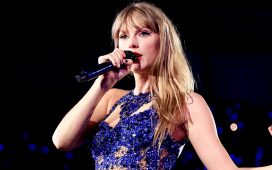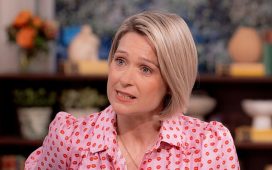Warning: contains spoilers for episodes one to three of The War Of The Worlds.
First serialised in 1897, H.G. Wells’ The War Of The Worlds is one of the foremost classics in the science fiction genre. The first person account of an alien invasion has captured the imagination throughout the 20th century and beyond. From Orson Welles to Steven Spielberg via Jeff Wayne, the adaptation history of Wells’ novel is just as famous as the novel itself. Following these famous adaptations is no mean feat, so how did the BBC One version go about finding a new take on an old classic? What was kept and what was changed?
Keep: The Period Setting


If you are screenwriter Peter Harness, you go right back to the source. Set in 1905, just a little way after the time of writing and out of the Victorian into the Edwardian, Harness’ adaptation is the first on screen to embrace the period setting and combine tripods and tailcoats. Not only does it place the narrative back in its original context, it also grants us the glorious juxtaposition of the high-tech Martian tripods with their enigmatic weaponry versus a society that was still only just at the brink of modernity. It emphasises just how powerful the Martians are, a comparison Wells consistently made when referring to humanity as ants versus the might of the alien threat. Harness does expanding on the timeline though, offering us a glimpse of Amy’s life post-invasion in an Earth rendered more like Mars as a result of the invasion.
Change: The Characters


In Wells’ story, an unnamed narrator documents the Martian invasion from the arrival of the first cylinder. As Harness observes, the books reads “more like a piece of reportage” than an adventure story. There is little characterisation to this narrator or the people he encounters. His wife and son are packed off to Leatherhead for their safety, not to be seen until the end of the novel. His brother steps in to rescue a Mrs Elphinstone and her younger sister-in-law, the three of them evacuating to Europe to see out the evacuation.
“One of the hardest things to flush out in the adaptation process is to populate the story with characters and make it about their personal journey,” Harness says in a BBC interview, which led to the development of George (Rafe Spall) and Amy (Eleanor Tomlinson). In a rather touching tribute, George and Amy are named after Wells (George was the name by which he was most often called) and his wife.
George is an expanded version of the unnamed narrator, a struggling journalist who has defied convention to leave his unhappy marriage to live with Amy, the woman he loves. He has a fractious relationship with his brother Frederick (Rupert Graves) too, who is Private Secretary to the Minister for War and thus representative of the establishment and tradition that George is defying.
Amy is one of the major departures from the source material and Harness made sure that she “had a strength of character in her own right.” In terms of historical context, Amy is a good example of an Edwardian New Woman, a term coined in the late nineteenth century to describe the wave of young women determined to assert their independence, gain access to higher education, and pursue their own relationships.
Ogilvy (Robert Carlisle) is another interesting twist on the character from the original book. The book version of Ogilvy is, like the narrator, thinly sketched and doesn’t last very long, incinerated by the Heat Ray as part of humanity’s first deputation to the Martians. In the adaptation, it is hinted early on that he is homosexual and so understands George and Amy’s pariah status, having one of his own; Oscar Wilde had been in prison for gross indecency with men during the time in which Wells was writing.
Keep: The Set Pieces


As Harness observes, “the audience will want to see the larger set sequences” from the novel and delivers them with aplomb. George, Amy and Frederick are there to witness the ground-level terror of the invasion. They are the audience’s eyes in this new, apocalyptic landscape. Craig Viveiros’ direction uses this particularly well, tilting the camera up at tripods over London and stalking across England. The initial panic created by the use of the Heat Ray is every bit as brutal as it is in the book and the Black Smoke is used in a stunning sequence as it spreads over London, darkening the cellar in which Amy and Frederick are hidden.
The scenes in the old school are a particularly effective spin on the second half of Wells’ story, in which the narrator finds himself trapped with a curate in a school as the Martians close in. It’s an extremely tense sequence and shocking in its violence when the curate is finally taken. The adaptation finds George, Amy, and Frederick taking refuge in the abandoned school. This version of Mrs Elphinstone is with them, dying of what is likely typhoid, and it is her death that brings the first view of a Martian outside of its tripod. The brutality doesn’t end there either as the third episode uses the scenes in the school to play out like a horror movie in which our heroes are stalked by a monster.
Change: The Martians


In Wells’ novel, the Martians are seen long before they are in the television series. The narrator observes them after the first cylinder opens, but they struggle with the Earth’s gravity and atmosphere so they crawl back inside to safety. The narrator describes them as “greyish” and about the size of bear with tentacles and two large dark-coloured eyes. The Martians assemble the enormous tripods on Earth. Harness’ adaptation, in contrast, keeps the Martians distant and almost unknowable for the most part. The tripods arrive fully formed and their Heat Ray make them invulnerable. Even later when they do emerge, they walk on sharp legs, taller than humans and faster too.
Of course one thing stays the same; the Martians are undone by the pathogens that humans carry. In a nod to the idea of Darwinian adaptation and survival that runs through both the book and the adaptation, the Martians cannot develop the required immunity to the diseases that men carry. In the future timeline, Amy and Ogilvy work this out and infect the red weed with the typhoid that’s making Amy’s child sick, finally allowing Earth plants to grow.
Change: The Ending


As the two timelines draw to a close in the television series, we find out how Amy and her unborn child escape from the Martians keeping them in the school; it is through Frederick and George’s sacrifice. In the novel, the narrator makes it through his close encounter with the Martians, escaping while they are distracted by consuming the curate’s body.
The novel ends rather abruptly with the narrator finding his family again and reflecting on the invasion, observing the lasting trauma that it leaves. In the adaptation, Harness chooses to project into the future, where the Martian invasion has changed Earth’s climate to be near-inhospitable, covered in red weed and choking on dust.
In this, Harness brings a modern anxiety in with Wells’ contemporary ones. The Martians may have died, but they left behind a legacy that colonised the environment for them. If George is right and the British empire-building and industrial revolution brought the Martians to Earth, then it is also responsible for the Earth’s red transformation. It feels fitting that Harness’ dystopian vision of a post-invasion Earth finds the climate transformed into something near-inhospitable, but still with a glimmer of hope.













